Mosque
A mosque (/mɒsk/; from Arabic: مَسْجِد, romanized: masjid, pronounced [masdʒid]; literally "place of ritual prostration") is a place of worship for Muslims.[1][2] Any act of worship that follows the Islamic rules of prayer can be said to create a mosque, whether or not it takes place in a special building.[2] Informal and open-air places of worship are called musalla, while mosques used for communal prayer on Fridays are known as jāmiʿ.[1] Mosque buildings typically contain an ornamental niche (mihrab) set into the wall that indicates the direction of Mecca (qiblah),[1] ablution facilities and minarets from which calls to prayer are issued.[1][2] The pulpit (minbar), from which the Friday (jumu'ah) sermon (khutba) is delivered, was in earlier times characteristic of the central city mosque, but has since become common in smaller mosques.[3][1] Mosques typically have segregated spaces for men and women.[1] This basic pattern of organization has assumed different forms depending on the region, period and denomination.[2]
| Mosque | |
|---|---|
مَسْجِد | |
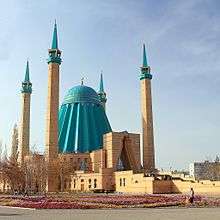 | |
| Religion | |
| Affiliation | Islam |
| Part of a series on |
| Islam |
|---|
 |
|
Mosques commonly serve as locations for prayer, Ramadan vigils, funeral services, Sufi ceremonies, marriage and business agreements, alms collection and distribution, as well as homeless shelters.[1][3] Historically, mosques were also important centers of elementary education and advanced training in religious sciences. In modern times, they have preserved their role as places of religious instruction and debate, but higher learning now generally takes place in specialised institutions.[1][3] Special importance is accorded to the Great Mosque of Mecca (centre of the hajj), the Prophet's Mosque in Medina (burial place of Muhammad) and Al-Aqsa Mosque in Jerusalem (believed to be the site of Muhammad's ascent to heaven).[1] In the past, many mosques in the Muslim world were built over burial places of Sufi saints and other venerated figures, which has turned them into popular pilgrimage destinations.[1][2]
With the spread of Islam, mosques multiplied across the Islamic world. Numerous churches and temples were converted into mosques, which influenced Islamic architectural styles.[3] While most pre-modern mosques were funded by charitable endowments, modern states in the Muslim world have attempted to bring mosques under government control.[1] Increasing government regulation of large mosques has been countered by a rise of privately funded mosques of various affiliations and ideologies, many of which serve as bases for different Islamic revivalist currents and social activism.[3] Mosques have played a number of political roles. The rates of mosque attendance vary widely depending on the region.
Etymology
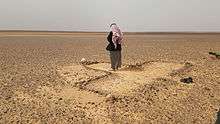
The word 'mosque' entered the English language from the French word mosquée, probably derived from Italian moschea (a variant of Italian moscheta), from either Middle Armenian մզկիթ (mzkit‘), Medieval Greek: μασγίδιον (masgídion), or Spanish mezquita, from مسجد (meaning "site of prostration (in prayer)" and hence a place of worship), either from Nabataean masgĕdhā́ or from Arabic Arabic: سَجَدَ, romanized: sajada (meaning "to bow down in prayer"), probably ultimately from Nabataean Arabic masgĕdhā́ or Aramaic sĕghēdh.[4]
History
Beginnings
According to some scholars, Islam started during the lifetime of Muhammad in the 7th century CE,[5] and so did architectural components such as the mosque. In this case, either the Mosque of the Companions in the Eritrean city of Massawa,[6] or the Quba Mosque in the Hejazi city of Medina (the first structure built by Muhammad upon his emigration from Mecca in 622 CE),[7] would be the first mosque that was built in the history of Islam.[8]
Other scholars, referring to passages of the Quran,[9][10][11] state that Islam as a religion preceded Muhammad,[12][13][14] and includes previous prophets such as Abraham.[15] Abraham in Islam is credited with having built the Ka'bah ('Cube') in Mecca, and consequently its sanctuary, Al-Masjid Al-Haram (The Sacred Mosque), which is seen as the first mosque[8] that existed.[16][17][18][19] A Hadith in Sahih al-Bukhari states that the sanctuary of the Kaaba was the first mosque on Earth, with the second mosque being Al-Aqsa Mosque in Jerusalem,[20] which is also associated with Abraham.[17] Since as early as 638 AD, the Sacred Mosque of Mecca has been expanded on several occasions to accommodate the increasing number of Muslims who either live in the area or make the annual pilgrimage known as Hajj to the city.[21]
Either way, after the Quba Mosque, Muhammad went on to establish another mosque in Medina, which is now known as Al-Masjid an-Nabawi (The Prophet's Mosque). Built on the site of his home, Muhammad participated in the construction of the mosque himself and helped pioneer the concept of the mosque as the focal point of the Islamic city.[22] The Prophet's mosque introduced some of the features still common in today's mosques, including the niche at the front of the prayer space known as the mihrab and the tiered pulpit called the minbar.[23] The mosque was also constructed with a large courtyard, a motif common among mosques built since then.[22]
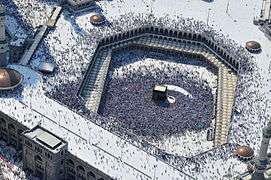 2010 Aerial view of the largest mosque in the world, The Sacred Mosque (Al-Masjid Al-Ḥarām) of Mecca in the Hejaz, present-day Saudi Arabia, with the Kaaba in the center
2010 Aerial view of the largest mosque in the world, The Sacred Mosque (Al-Masjid Al-Ḥarām) of Mecca in the Hejaz, present-day Saudi Arabia, with the Kaaba in the center.jpg) The Temple Mount in the Old City of Jerusalem in the West Bank, Shaam, with the Dome of the Rock (Qubbat As-Sakhrah) to the left, and Al-Aqsa Mosque to the right
The Temple Mount in the Old City of Jerusalem in the West Bank, Shaam, with the Dome of the Rock (Qubbat As-Sakhrah) to the left, and Al-Aqsa Mosque to the right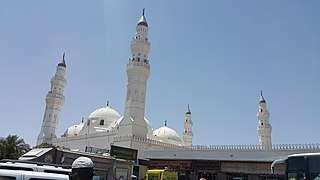
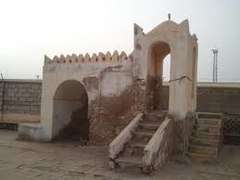
.jpg) Al-Masjid an-Nabawi (The Prophet's Mosque) in Medina
Al-Masjid an-Nabawi (The Prophet's Mosque) in Medina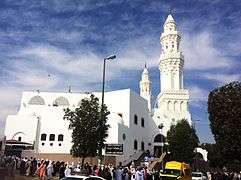 Masjid al-Qiblatayn (Mosque of the two Qiblahs) in Medina
Masjid al-Qiblatayn (Mosque of the two Qiblahs) in Medina
Diffusion and evolution
Mosques had been built in Iraq and North Africa by the end of the 7th century, as Islam spread outside the Arabian Peninsula with early caliphates. The Imam Husayn Shrine in Karbala is reportedly one of the oldest mosques in Iraq, although its present form – typical of Persian architecture – only goes back to the 11th century. The shrine, while still operating as a mosque, remains one of the holiest sites for Shi'ite Muslims, as it honors the death of the third Shia imam, and Muhammad's grandson, Hussein ibn Ali.[24] The Mosque of Amr ibn al-As was reportedly the first mosque in Egypt, serving as a religious and social center for Fustat (present-day Cairo) during its prime. Like the Imam Husayn Shrine, though, nothing of its original structure remains.[25] With the later Shia Fatimid Caliphate, mosques throughout Egypt evolved to include schools (known as madrasas), hospitals, and tombs.[26]
The Great Mosque of Kairouan in present-day Tunisia was reportedly the first mosque built in northwest Africa, with its present form (dating from the 9th century) serving as a model for other Islamic places of worship in the Maghreb. It was the first to incorporate a square minaret (as opposed to the more common circular minaret) and includes naves akin to a basilica.[27][28] Those features can also be found in Andalusian mosques, including the Grand Mosque of Cordoba, as they tended to reflect the architecture of the Moors instead of their Visigoth predecessors.[28] Still, some elements of Visigothic architecture, like horseshoe arches, were infused into the mosque architecture of Spain and the Maghreb.[29]
The first mosque in East Asia was reportedly established in the 8th century in Xi'an. However, the Great Mosque of Xi'an, whose current building dates from the 18th century, does not replicate the features often associated with mosques elsewhere.[30] Minarets were initially prohibited by the state.[31] Following traditional Chinese architecture, the Great Mosque of Xi'an, like many other mosques in eastern China, resembles a pagoda, with a green roof instead of the yellow roof common on imperial structures in China. Mosques in western China were more likely to incorporate elements, like domes and minarets, traditionally seen in mosques elsewhere.[30]
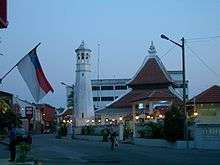
A similar integration of foreign and local influences could be seen on the Indonesian islands of Sumatra and Java, where mosques, including the Demak Great Mosque, were first established in the 15th century.[32] Early Javanese mosques took design cues from Hindu, Buddhist, and Chinese architectural influences, with tall timber, multi-level roofs similar to the pagodas of Balinese Hindu temples; the ubiquitous Islamic dome did not appear in Indonesia until the 19th century.[31][33] In turn, the Javanese style influenced the styles of mosques in Indonesia's Austronesian neighbors—Malaysia, Brunei, and the Philippines.[32]
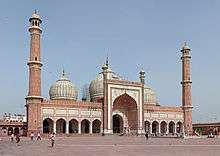
Muslim empires were instrumental in the evolution and spread of mosques. Although mosques were first established in India during the 7th century, they were not commonplace across the subcontinent until the arrival of the Mughals in the 16th and 17th centuries. Reflecting their Timurid origins, Mughal-style mosques included onion domes, pointed arches, and elaborate circular minarets, features common in the Persian and Central Asian styles.[34] The Jama Masjid in Delhi and the Badshahi Mosque in Lahore, built in a similar manner in the mid-17th century,[35] remain two of the largest mosques on the Indian subcontinent.[36]
The Umayyad Caliphate was particularly instrumental in spreading Islam and establishing mosques within the Levant, as the Umayyads constructed among the most revered mosques in the region — Al-Aqsa Mosque and Dome of the Rock in Jerusalem, and the Umayyad Mosque in Damascus.[37] The designs of the Dome of the Rock and the Umayyad Mosque were influenced by Byzantine architecture, a trend that continued with the rise of the Ottoman Empire.[38]
Several of the early mosques in the Ottoman Empire were originally churches or cathedrals from the Byzantine Empire, with the Hagia Sophia (one of those converted cathedrals) informing the architecture of mosques from after the Ottoman conquest of Constantinople.[39] Still, the Ottomans developed their own architectural style characterized by large central rotundas (sometimes surrounded by multiple smaller domes), pencil-shaped minarets, and open facades.[40]
Mosques from the Ottoman period are still scattered across Eastern Europe, but the most rapid growth in the number of mosques in Europe has occurred within the past century as more Muslims have migrated to the continent. Many major European cities are home to mosques, like the Grand Mosque of Paris, that incorporate domes, minarets, and other features often found with mosques in Muslim-majority countries.[41] The first mosque in North America was founded by Albanian Americans in 1915, but the continent's oldest surviving mosque, the Mother Mosque of America, was built in 1934.[42] As in Europe, the number of American mosques has rapidly increased in recent decades as Muslim immigrants, particularly from South Asia, have come in the United States. Greater than forty percent of mosques in the United States were constructed after 2000.[43]
Conversion of non-Muslim places of worship
.jpg)
According to early Muslim historians, towns that surrendered without resistance and made treaties with the Muslims were allowed to retain their churches and the towns captured by Muslims had many of their churches converted to mosques.[44] One of the earliest examples of these kinds of conversions was in Damascus, Syria, where in 705 Umayyad caliph Al-Walid I bought the church of St. John from the Christians and had it rebuilt as a mosque in exchange for building a number of new churches for the Christians in Damascus. Overall, Abd al-Malik ibn Marwan (Al-Waleed's father) is said to have transformed 10 churches in Damascus into mosques.[45]
The process of turning churches into mosques were especially intensive in the villages where most of the inhabitants converted to Islam. The Abbasid caliph al-Ma'mun turned many churches into mosques. Ottoman Turks converted nearly all churches, monasteries, and chapels in Constantinople, including the famous Hagia Sophia, into mosques immediately after capturing the city in 1453. In some instances mosques have been established on the places of Jewish or Christian sanctuaries associated with Biblical personalities who were also recognized by Islam.[46]
Mosques have also been converted for use by other religions, notably in southern Spain, following the conquest of the Moors in 1492.[47] The most prominent of them is the Great Mosque of Cordoba, itself constructed on the site of a church demolished during the period of Muslim rule. Outside of the Iberian Peninsula, such instances also occurred in southeastern Europe once regions were no longer under Muslim rule.
Religious functions
The masjid jāmiʿ (Arabic: مَسْجِد جَامِع), a central mosque, can play a role in religious activities such as teaching the Quran and educating future imams.
Prayers
There are two holidays (Eids) in the Islamic calendar: ʿĪd al-Fiṭr and ʿĪd al-Aḍḥā, during which there are special prayers held at mosques in the morning. These Eid prayers are supposed to be offered in large groups, and so, in the absence of an outdoor Eidgah, a large mosque will normally host them for their congregants as well as the congregants of smaller local mosques. Some mosques will even rent convention centers or other large public buildings to hold the large number of Muslims who attend. Mosques, especially those in countries where Muslims are the majority, will also host Eid prayers outside in courtyards, town squares or on the outskirts of town in an Eidgah.[48][49]
Ramadan
Islam's holiest month, Ramaḍān, is observed through many events. As Muslims must fast during the day during Ramadan, mosques will host Ifṭār dinners after sunset and the fourth required prayer of the day, that is Maghrib. Food is provided, at least in part, by members of the community, thereby creating daily potluck dinners. Because of the community contribution necessary to serve iftar dinners, mosques with smaller congregations may not be able to host the iftar dinners daily. Some mosques will also hold Suḥūr meals before dawn to congregants attending the first required prayer of the day, Fajr. As with iftar dinners, congregants usually provide the food for suhoor, although able mosques may provide food instead. Mosques will often invite poorer members of the Muslim community to share in beginning and breaking the fasts, as providing charity during Ramadan is regarded in Islam as especially honorable.[50]
Following the last obligatory daily prayer (ʿIshāʾ) special, optional Tarāwīḥ prayers are offered in larger mosques. During each night of prayers, which can last for up to two hours each night, usually one member of the community who has memorized the entire Quran (a Hafiz) will recite a segment of the book.[51] Sometimes, several such people (not necessarily of the local community) take turns to do this. During the last ten days of Ramadan, larger mosques will host all-night programs to observe Laylat al-Qadr, the night Muslims believe that Muhammad first received Quranic revelations.[51] On that night, between sunset and sunrise, mosques employ speakers to educate congregants in attendance about Islam. Mosques or the community usually provide meals periodically throughout the night
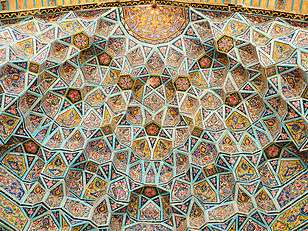
During the last ten days of Ramadan, larger mosques within the Muslim community will host Iʿtikāf, a practice in which at least one Muslim man from the community must participate. Muslims performing itikaf are required to stay within the mosque for ten consecutive days, often in worship or learning about Islam. As a result, the rest of the Muslim community is responsible for providing the participants with food, drinks, and whatever else they need during their stay.[51]
Charity
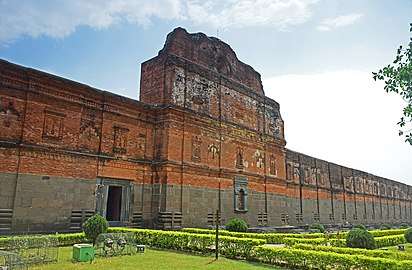
The third of the Five Pillars of Islam states that Muslims are required to give approximately one-fortieth of their wealth to charity as Zakat.[52] Since mosques form the center of Muslim communities, they are where Muslims go to both give zakat and, if necessary, collect it. Before the holiday of Eid ul-Fitr, mosques also collect a special zakat that is supposed to assist in helping poor Muslims attend the prayers and celebrations associated with the holiday.
Frequency of attendance
The frequency by which Muslims attend mosque services vary greatly around the world. In some countries, weekly attendance at religious services are common among Muslims while in others, attendance is rare.
In the United States in particular, it has been shown in a study done by the Institute for Social Policy and Understanding that Muslim Americans who regularly attend mosques are more likely to work with their neighbors to solve community problems (49 vs. 30 percent), be registered to vote (74 vs. 49 percent), and plan to vote (92 vs. 81 percent). The study also states that “there is no correlation between Muslim attitudes toward violence and their frequency of mosque attendance.” [53]
When it comes to mosque attendance, data shows that American Muslim women and American Muslim men attend the mosque at similar rates (45% for men and 35% for women). Additionally, when compared to the general public looking at the attendance of religious services, young Muslim Americans attend the mosque at closer rates to older Muslim Americans.[53]
Role in contemporary society
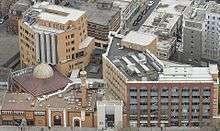
Political mobilization
The late 20th century saw an increase in the number of mosques used for political purposes. While some governments in the Muslim world have attempted to limit the content of Friday sermons to strictly religious topics, there are also independent preachers who deliver khutbas that address social and political issues, often in emotionally charged terms. Common themes include social inequalities, necessity of jihad in the face of injustice, the universal struggle between good and evil, with the West often symbolizing moral and spiritual decadence, and criticism of local rulers for corruption and inefficiency.[1] In Islamic countries like Bangladesh, Pakistan, Iran, and Saudi Arabia, political subjects are preached by imams at Friday congregations on a regular basis.[70] Mosques often serve as meeting points for political opposition in times of crisis.[1]
Countries with a minority Muslim population are more likely than Muslim-majority countries of the Greater Middle East to use mosques as a way to promote civic participation.[71] Studies of US Muslims have consistently shown a positive correlation between mosque attendance and political involvement. Some of the research connects civic engagement specifically with mosque attendance for social and religious activities other than prayer.[72] American mosques host voter registration and civic participation drives that promote involving Muslims, who are often first- or second-generation immigrants, in the political process. As a result of these efforts as well as attempts at mosques to keep Muslims informed about the issues facing the Muslim community, regular mosque attendants are more likely to participate in protests, sign petitions, and otherwise be involved in politics.[71] Research on Muslim civic engagement in other Western countries "is less conclusive but seems to indicate similar trends."[72]
Role in violent conflicts
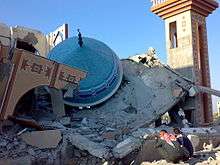
As they are considered important to the Muslim community, mosques, like other places of worship, can be at the heart of social conflicts. The Babri Mosque was the subject of such a conflict up until the early 1990s when it was demolished. Before a mutual solution could be devised, the mosque was destroyed on December 6, 1992 as the mosque was built by Babur allegedly on the site of a previous Hindu temple marking the birthplace of Rama.[73] The controversy surrounded the mosque was directly linked to rioting in Bombay (present-day Mumbai) as well as bombings in 1993 that killed 257 people.[74]
Bombings in February 2006 and June 2007 seriously damaged Iraq's al-Askari Mosque and exacerbated existing tensions. Other mosque bombings in Iraq, both before and after the February 2006 bombing, have been part of the conflict between the country's groups of Muslims. However, mosque bombings have not been exclusive to Iraq; in June 2005, a suicide bomber killed at least 19 people at an Afghan Shia mosque near Jade Maivand.[75] In April 2006, two explosions occurred at India's Jama Masjid.[76][77] Following the al-Askari Mosque bombing in Iraq, imams and other Islamic leaders used mosques and Friday prayers as vehicles to call for calm and peace in the midst of widespread violence.[78]
A study 2005 indicated that while support for suicide bombings is not correlated with personal devotion to Islam among Palestinian Muslims, it is correlated with mosque attendance because "participating in communal religious rituals of any kind likely encourages support for self-sacrificing behaviors that are done for the collective good."[79]
Following the September 11 attacks, several American mosques were targeted in attacks ranging from simple vandalism to arson.[80] Furthermore, the Jewish Defense League was suspected of plotting to bomb the King Fahd Mosque in Culver City, California.[81] Similar attacks occurred throughout the United Kingdom following the 7 July 2005 London bombings. Outside the Western world, in June 2001, the Hassan Bek Mosque was the target of vandalism and attacks by hundreds of Israelis after a suicide bomber killed 19 people in a night club in Tel Aviv.[82][83][84] Although mosquegoing is highly encouraged for men, it is permitted to stay at home when one feels at risk from Islamophobic persecution.[85]
Saudi influence
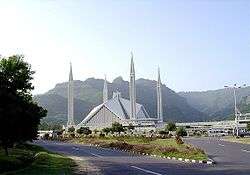
Although the Saudi involvement in Sunni mosques around the world can be traced back to the 1960s, it was not until later in the 20th century that the government of Saudi Arabia became a large influence in foreign Sunni mosques.[86] Beginning in the 1980s, the Saudi Arabian government began to finance the construction of Sunni mosques in countries around the world. An estimated US$45 billion has been spent by the Saudi Arabian government financing mosques and Sunni Islamic schools in foreign countries. Ain al-Yaqeen, a Saudi newspaper, reported in 2002 that Saudi funds may have contributed to building as many as 1,500 mosques and 2,000 other Islamic centers.[87]
Saudi citizens have also contributed significantly to mosques in the Islamic world, especially in countries where they see Muslims as poor and oppressed. Following the fall of the Soviet Union, in 1992, mosques in war-torn Afghanistan saw many contributions from Saudi citizens.[86] The King Fahd Mosque in Culver City, California and the Islamic Cultural Center of Italy in Rome represent two of Saudi Arabia's largest investments in foreign mosques as former Saudi king Fahd bin Abdul Aziz al-Saud contributed US$8 million[86] and US$50 million[88] to the two mosques, respectively.
Political controversy
In the western world, and in the United States in particular, Anti-Muslim sentiment and targeted domestic policy has created challenges for mosques and those looking to build them. There has been government and police surveillance of mosques in the US[89] and local attempts to ban mosques and block constructions,[90] despite data showing that in fact, most Americans opposing banning the building of mosques (79%) and the surveillance of U.S. mosques (63%) as shown in a 2018 study done by the Institute for Social Policy and Understanding.[91]
Ningxia officials were notified on 3 August 2018 that the Weizhou Grand Mosque would be forcibly demolished because it had not received the proper permits before construction.[92][93][94] Officials in the town said that the mosque had not been given proper building permits, because it is built in a Middle Eastern style and includes numerous domes and minarets.[92][93] The residents of Weizhou alarmed each other through social media and finally stopped the mosque destruction by public demonstrations.[93]
Architecture
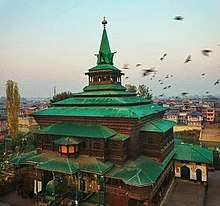
Styles
.jpg)
Arab-plan or hypostyle mosques are the earliest type of mosques, pioneered under the Umayyad Dynasty. These mosques have square or rectangular plans with an enclosed courtyard and covered prayer hall. Historically, in the warm Middle Eastern and Mediterranean climates, the courtyard served to accommodate the large number of worshippers during Friday prayers. Most early hypostyle mosques had flat roofs on prayer halls, which required the use of numerous columns and supports.[46] One of the most notable hypostyle mosques is the Great Mosque of Cordoba in Spain, the building being supported by over 850 columns.[95] Frequently, hypostyle mosques have outer arcades so that visitors can enjoy the shade. Arab-plan mosques were constructed mostly under the Umayyad and Abbasid dynasties; subsequently, however, the simplicity of the Arab plan limited the opportunities for further development, the mosques consequently losing popularity.[46]
The first departure within mosque design started in Persia (Iran). The Persians had inherited a rich architectural legacy from the earlier Persian dynasties, and they began incorporating elements from earlier Parthian and Sassanid designs into their mosques, influenced by buildings such as the Palace of Ardashir and the Sarvestan Palace.[96] Thus, Islamic architecture witnessed the introduction of such structures as domes and large, arched entrances, referred to as iwans. During Seljuq rule, as Islamic mysticism was on the rise, the four-iwan arrangement took form. The four-iwan format, finalized by the Seljuqs, and later inherited by the Safavids, firmly established the courtyard façade of such mosques, with the towering gateways at every side, as more important than the actual buildings themselves.[96] They typically took the form of a square-shaped central courtyard with large entrances at each side, giving the impression of gateways to the spiritual world.[97] The Persians also introduced Persian gardens into mosque designs. Soon, a distinctly Persian style of mosques started appearing that would significantly influence the designs of later Timurid, and also Mughal, mosque designs.
The Ottomans introduced central dome mosques in the 15th century. These mosques have a large dome centered over the prayer hall. In addition to having a large central dome, a common feature is smaller domes that exist off-center over the prayer hall or throughout the rest of the mosque, where prayer is not performed.[98] This style was heavily influenced by Byzantine architecture with its use of large central domes.[46] Hajja Soad's mosque took a pyramid shape that is a creative style in Islamic architecture.
Mosques built in Southeast Asia often represent the Indonesian-Javanese style architecture, which are different from the ones found throughout the Greater Middle East. The ones found in Europe and North America appear to have various styles but most are built on Western architectural designs, some are former churches or other buildings that were used by non-Muslims. In Africa, most mosques are old but the new ones are built in imitation of those of the Middle East. This can be seen in the Abuja National Mosque in Nigeria and others.
Minarets
A common feature in mosques is the minaret, the tall, slender tower that usually is situated at one of the corners of the mosque structure. The top of the minaret is always the highest point in mosques that have one, and often the highest point in the immediate area. The tallest minaret in the world is located at the Hassan II Mosque in Casablanca, Morocco.[99][100][101] It has a height of 210 metres (689 ft) and completed in 1993, it was designed by Michel Pinseau. The first mosques had no minarets, and even nowadays the most conservative Islamic movements, like Wahhabis, avoid building minarets, seeing them as ostentatious and hazardous in case of collapse. The first minaret was constructed in 665 in Basra during the reign of the Umayyad caliph Muawiyah I. Muawiyah encouraged the construction of minarets, as they were supposed to bring mosques on par with Christian churches with their bell towers. Consequently, mosque architects borrowed the shape of the bell tower for their minarets, which were used for essentially the same purpose—calling the faithful to prayer.[102] The oldest standing minaret in the world is the minaret of the Great Mosque of Kairouan in Tunisia,[103][104] built between the 8th and the 9th century, it is a massive square tower consisting of three superimposed tiers of gradual size and decor.[105]
Before the five required daily prayers, a Mu’adhdhin (Arabic: مُـؤَذِّن) calls the worshippers to prayer from the minaret. In many countries like Singapore where Muslims are not the majority, mosques are prohibited from loudly broadcasting the Adhān (Arabic: أَذَان, Call to Prayer), although it is supposed to be said loudly to the surrounding community. The adhan is required before every prayer. However, nearly every mosque assigns a muezzin for each prayer to say the adhan as it is a recommended practice or Sunnah (Arabic: سُـنَّـة) of the Islamic prophet Muhammad. At mosques that do not have minarets, the adhan is called instead from inside the mosque or somewhere else on the ground.[51] The Iqâmah (Arabic: إِقَـامَـة), which is similar to the adhan and proclaimed right before the commencement of prayers, is usually not proclaimed from the minaret even if a mosque has one.
Mihrab
A miḥrāb, also spelled as mehrab is a semicircular niche in the wall of a mosque that indicates the qiblah (the direction of the Kaaba) in Mecca, and hence the direction that Muslims should face when praying. The wall in which a mihrab appears is thus the "qibla wall." Mihrabs should not be confused with the minbar, which is the raised platform from which an Imam (leader of prayer) addresses the congregation.
Domes
The domes, often placed directly above the main prayer hall, may signify the vaults of the heaven and sky.[106] As time progressed, domes grew, from occupying a small part of the roof near the mihrab to encompassing the whole roof above the prayer hall. Although domes normally took on the shape of a hemisphere, the Mughals in India popularized onion-shaped domes in South Asia which has gone on to become characteristic of the Arabic architectural style of dome.[107] Some mosques have multiple, often smaller, domes in addition to the main large dome that resides at the center.
Prayer hall
The prayer hall, also known as the muṣallá (Arabic: مُصَلَّى), rarely has furniture; chairs and pews are generally absent from the prayer hall so as to allow as many worshipers as possible to line the room.[108] Some mosques have Islamic calligraphy and Quranic verses on the walls to assist worshippers in focusing on the beauty of Islam and its holiest book, the Quran, as well as for decoration.[51]
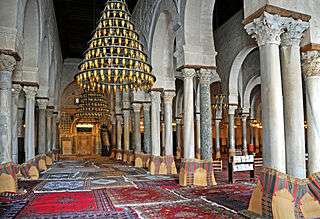
Often, a limited part of the prayer hall is sanctified formally as a masjid in the sharia sense (although the term masjid is also used for the larger mosque complex as well). Once designated, there are onerous limitations on the use of this formally designated masjid, and it may not be used for any purpose other than worship; restrictions that do not necessarily apply to the rest of the prayer area, and to the rest of the mosque complex (although such uses may be restricted by the conditions of the waqf that owns the mosque).[109]
In many mosques, especially the early congregational mosques, the prayer hall is in the hypostyle form (the roof held up by a multitude of columns).[110] One of the finest examples of the hypostyle-plan mosques is the Great Mosque of Kairouan (also known as the Mosque of Uqba) in Tunisia.[111]
Usually opposite the entrance to the prayer hall is the qiblah wall, the visually emphasized area inside the prayer hall. The qiblah wall should, in a properly oriented mosque, be set perpendicular to a line leading to Mecca, the location of the Kaaba.[112] Congregants pray in rows parallel to the qiblah wall and thus arrange themselves so they face Mecca. In the qiblah wall, usually at its center, is the mihrab, a niche or depression indicating the direction of Mecca. Usually the mihrab is not occupied by furniture either. A raised minbar or pulpit is located to the right side of the mihrab for a Khaṭīb, or some other speaker, to offer a Khuṭbah (Sermon) during Friday prayers. The mihrab serves as the location where the imam leads the five daily prayers on a regular basis.[113]

Left to the mihrab, in the front left corner of the mosque, sometimes there is a kursu (Turkish kürsü, Bosnian ćurs/ћурс), a small elevated plateau (rarely with a chair or other type of seat) used for less formal preaching and speeches.
Makhphil
Women who pray in mosques are separated from men there. Their part for prayer is called makhphil[114] or maqfil (Bosnian makfil/макфил). It is located above the main prayer hall, elevated in the background as stairs-separated gallery or plateau (surface-shortened to the back relative to the bottom main part). It usually has a perforated fence at the front, through which imam (and male prayers in the main hall) can be partially seen. Makhphil is completely used by men when Jumu'ah is practised (due to lack of space).
Ablution facilities
As ritual purification precedes all prayers, mosques often have ablution fountains or other facilities for washing in their entryways or courtyards. However, worshippers at much smaller mosques often have to use restrooms to perform their ablutions. In traditional mosques, this function is often elaborated into a freestanding building in the center of a courtyard.[95] This desire for cleanliness extends to the prayer halls where shoes are disallowed to be worn anywhere other than the cloakroom. Thus, foyers with shelves to put shoes and racks to hold coats are commonplace among mosques.[108]
Contemporary features
Modern mosques have a variety of amenities available to their congregants. As mosques are supposed to appeal to the community, they may also have additional facilities, from health clinics and clubs (gyms) to libraries to gymnasiums, to serve the community.
Symbols
Certain symbols are represented in a mosque's architecture to allude to different aspects of the Islamic religion. One of these feature symbols is the spiral. The "cosmic spiral" found in designs and on minarets is a references to heaven as it has "no beginning and no end".[115] Mosques also often have floral patterns or images of fruit and vegetables. These are allusions to the paradise after death.[115]
Rules and etiquette
Mosques, in accordance with Islamic practices, institute a number of rules intended to keep Muslims focused on worshiping God. While there are several rules, such as those regarding not allowing shoes in the prayer hall, that are universal, there are many other rules that are dealt with and enforced in a variety of ways from mosque to mosque.
Prayer leader (Imam)
Appointment of a prayer leader is considered desirable, but not always obligatory.[116] The permanent prayer leader (imam) must be a free honest individual and is authoritative in religious matters.[116] In mosques constructed and maintained by the government, the prayer leader is appointed by the ruler;[116] in private mosques, however, appointment is made by members of the congregation through majority voting. According to the Hanafi school of Islamic jurisprudence, the individual who built the mosque has a stronger claim to the title of imam, but this view is not shared by the other schools.[116]
Leadership at prayer falls into three categories, depending on the type of prayer: five daily prayers, Friday prayer, or optional prayers.[116] According to the Hanafi and Maliki school of Islamic jurisprudence, appointment of a prayer leader for Friday service is mandatory because otherwise the prayer is invalid. The Shafi'i and Hanbali schools, however, argue that the appointment is not necessary and the prayer is valid as long as it is performed in a congregation. A slave may lead a Friday prayer, but Muslim authorities disagree over whether the job can be done by a minor.[116] An imam appointed to lead Friday prayers may also lead at the five daily prayers; Muslim scholars agree to the leader appointed for five daily services may lead the Friday service as well.[116]
All Muslim authorities hold the consensus opinion that only men may lead prayer for men.[116] Nevertheless, women prayer leaders are allowed to lead prayer in front of all-female congregations.[117]
Cleanliness
All mosques have rules regarding cleanliness, as it is an essential part of the worshippers' experience. Muslims before prayer are required to cleanse themselves in an ablution process known as wudu. However, even to those who enter the prayer hall of a mosque without the intention of praying, there are still rules that apply. Shoes must not be worn inside the carpeted prayer hall. Some mosques will also extend that rule to include other parts of the facility even if those other locations are not devoted to prayer. Congregants and visitors to mosques are supposed to be clean themselves. It is also undesirable to come to the mosque after eating something that smells, such as garlic.[118]
Dress
Islam requires that its adherents wear clothes that portray modesty. Men are supposed to come to the mosque wearing loose and clean clothes that do not reveal the shape of the body. Likewise, it is recommended that women at a mosque wear loose clothing that covers to the wrists and ankles, and cover their heads with a Ḥijāb (Arabic: حِـجَـاب), or other covering. Many Muslims, regardless of their ethnic background, wear Middle Eastern clothing associated with Arabic Islam to special occasions and prayers at mosques.[51]
Concentration
As mosques are places of worship, those within the mosque are required to remain respectful to those in prayer. Loud talking within the mosque, as well as discussion of topics deemed disrespectful, is forbidden in areas where people are praying. In addition, it is disrespectful to walk in front of or otherwise disturb Muslims in prayer.[119] The walls within the mosque have few items, except for possibly Islamic calligraphy, so Muslims in prayer are not distracted.[120] Muslims are also discouraged from wearing clothing with distracting images and symbols so as not to divert the attention of those standing behind them during prayer. In many mosques, even the carpeted prayer area has no designs, its plainness helping worshippers to focus.
Gender separation
There is nothing written in the Qur'an about the issue of space in mosques and gender separation. However, traditional rules have segregated women and men. By traditional rules, women are most often told to occupy the rows behind the men. In part, this was a practical matter as the traditional posture for prayer – kneeling on the floor, head to the ground – made mixed-gender prayer uncomfortably revealing for many women and distracting for some men. Traditionalists try to argue that Muhammad preferred women to pray at home rather than at a mosque, and they cite a ḥadīth in which Muhammad supposedly said: "The best mosques for women are the inner parts of their houses," although women were active participants in the mosque started by Muhammad. Muhammad told Muslims not to forbid women from entering mosques. They are allowed to go in. The second Sunni caliph 'Umar at one time prohibited women from attending mosques especially at night because he feared they may be sexually harassed or assaulted by men, so he required them to pray at home.[121] Sometimes a special part of the mosque was railed off for women; for example, the governor of Mecca in 870 had ropes tied between the columns to make a separate place for women.[46]
Many mosques today will put the women behind a barrier or partition or in another room. Mosques in South and Southeast Asia put men and women in separate rooms, as the divisions were built into them centuries ago. In nearly two-thirds of American mosques, women pray behind partitions or in separate areas, not in the main prayer hall; some mosques do not admit women at all due to the lack of space and the fact that some prayers, such as the Friday Jumuʻah, are mandatory for men but optional for women. Although there are sections exclusively for women and children, the Grand Mosque in Mecca is desegregated.[122]
Non-Muslims
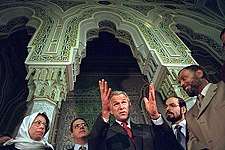
Under most interpretations of sharia, non-Muslims are permitted to enter mosques provided that they respect the place and the people inside it. A dissenting opinion and minority view is presented by followers of the Maliki school of Islamic jurisprudence, who argue that non-Muslims may not be allowed into mosques under any circumstances.[116]
The Quran addresses the subject of non-Muslims, and particularly polytheists, in mosques in two verses in its ninth chapter, Sura At-Tawba. The seventeenth verse of the chapter prohibits those who join gods with Allah—polytheists—from maintaining mosques:
It is not for such as join gods with Allah, to maintain the mosques of Allah while they witness against their own souls to infidelity. The works of such bear no fruit: In Fire shall they dwell.
The twenty-eighth verse of the same chapter is more specific as it only considers polytheists in the Sacred Mosque, the Masjid al-Haram in Mecca:
O ye who believe! Truly the Pagans are unclean; so let them not, after this year of theirs, approach the Sacred Mosque. And if ye fear poverty, soon will Allah enrich you, if He wills, out of His bounty, for Allah is All-knowing, All-wise.
— Quran, Sura 9 (At-Tawba), ayah 28[124]
According to Ahmad ibn Hanbal, these verses were followed to the letter at the times of Muhammad, when Jews and Christians, considered monotheists, were still allowed to Al-Masjid Al-Haram. However, the Umayyad caliph Umar II later forbade non-Muslims from entering mosques, and his ruling remains in practice in present-day Saudi Arabia.[46] Today, the decision on whether non-Muslims should be allowed to enter mosques varies. With few exceptions, mosques in the Arabian Peninsula as well as Morocco do not allow entry to non-Muslims. For example, the Hassan II Mosque in Casablanca is one of only two mosques in Morocco currently open to non-Muslims.[125]
However, there are also many other places in the West as well as the Islamic world where non-Muslims are welcome to enter mosques. Most mosques in the United States, for example, report receiving non-Muslim visitors every month. Many mosques throughout the United States welcome non-Muslims as a sign of openness to the rest of the community as well as to encourage conversions to Islam.[126][127]
In modern-day Saudi Arabia, the Grand Mosque and all of Mecca are open only to Muslims. Likewise, Al-Masjid Al-Nabawi and the city of Medina that surrounds it are also off-limits to those who do not practice Islam.[128] For mosques in other areas, it has most commonly been taken that non-Muslims may only enter mosques if granted permission to do so by Muslims, and if they have a legitimate reason. All entrants regardless of religious affiliation are expected to respect the rules and decorum for mosques.[51]
In modern Turkey, non-Muslim tourists are allowed to enter any mosque, but there are some strict rules. Visiting a mosque is allowed only between prayers; visitors are required to wear long trousers and not to wear shoes, women must cover their heads; visitors are not allowed to interrupt praying Muslims, especially by taking photos of them; no loud talk is allowed; and no references to other religions are allowed (no crosses on necklaces, no cross gestures, etc.) Similar rules apply to mosques in Malaysia, where larger mosques that are also tourist attractions (such as the Masjid Negara) provide robes and headscarves for visitors who are deemed inappropriately attired.[129]
In certain times and places, non-Muslims were expected to behave a certain way in the vicinity of a mosque: in some Moroccan cities, Jews were required to remove their shoes when passing by a mosque;[130] in 18th-century Egypt, Jews and Christians had to dismount before several mosques in veneration of their sanctity.[131]
The association of the mosque with education remained one of its main characteristics throughout history, and the school became an indispensable appendage to the mosque. From the earliest days of Islam, the mosque was the center of the Muslim community, a place for prayer, meditation, religious instruction, political discussion, and a school. Anywhere Islam took hold, mosques were established; and basic religious and educational instruction began.[132]
See also
- Maqsurah
- Holiest sites in Islam
- Imamah (Shi'a doctrine)
- Lists of mosques
Notes
- Kosovo is the subject of a territorial dispute between the Republic of Kosovo and the Republic of Serbia. The Republic of Kosovo unilaterally declared independence on 17 February 2008, but Serbia continues to claim it as part of its own sovereign territory. The two governments began to normalise relations in 2013, as part of the 2013 Brussels Agreement. Kosovo is currently recognized as an independent state by 97 out of the 193 United Nations member states. In total, 112 UN member states recognized Kosovo at some point, of which 15 later withdrew their recognition.
- Survey was conducted in 2016, not 2009–2012.
- Survey was only conducted in the southern five provinces.
- Survey was conducted in 2013, not 2009–2012. Sample was taken from entire population of Yemen, which is approximately 99% Muslim.
- Survey was conducted in 2015, not 2009–2012.
- Survey was conducted in 2016, not 2009–2012.
- Survey was conducted in 2008, not 2009–2012.
- Survey was conducted in 2015, not 2009–2012.
- Survey was conducted in 2008, not 2009–2012.
- Survey was conducted in 2013, not 2009–2012. Sample was taken from entire population of Libya, which is approximately 97% Muslim.
- Survey was conducted in 2016, not 2009–2012.
- Survey was conducted in 2008, not 2009–2012.
- Survey was conducted in 2008, not 2009–2012.
- Survey was conducted in 2017, not 2009–2012.
- Survey was conducted in 2017, not 2009–2012.
References
- John L. Esposito, ed. (2014). "Mosque". The Oxford Dictionary of Islam. Oxford University Press.
- Nuha N. N. Khoury (2009). "Mosque". In Juan Eduardo Campo (ed.). Encyclopedia of Islam. Infobase Publishing.
- Patrick D. Gaffney (2004). "Masjid". In Richard C. Martin (ed.). Encyclopedia of Islam and the Muslim World. MacMillan Reference.
- For the word's origin from French and probable origin from Italian moscheta, see "mosque, n.". OED Online. December 2011. Oxford University Press. . For the derivation of moscheta from Arabic sajada see "mesquita, n.". OED Online. December 2011. Oxford University Press. . For the probable origin of "sajada" from Aramaic, and the meanings of sajada and masjid in Arabic, see "masjid, n.". OED Online. December 2011. Oxford University Press. . For the inclusion of Spanish mesquita, possible derivation from Nabataean masgĕdhā́, and the Aramaic sĕghēdh, see Klein, E., A Comprehensive Etymological Dictionary of the English Language (Elsevier Publishing, 1966), p. 1007.
- Watt, William Montgomery (2003). Islam and the Integration of Society. Psychology Press. p. 5. ISBN 978-0-415-17587-6.
- Reid, Richard J. (12 January 2012). "The Islamic Frontier in Eastern Africa". A History of Modern Africa: 1800 to the Present. John Wiley and Sons. p. 106. ISBN 978-0-4706-5898-7. Retrieved 15 March 2015.
- Tajuddin 1998, p. 135
- Palmer, A. L. (2016-05-26). Historical Dictionary of Architecture (2nd ed.). Rowman & Littlefield. pp. 185–236. ISBN 978-1-4422-6309-3.
- Quran 2:7–286
- Quran 3:96 (Translated by Yusuf Ali)
- Quran 22:25–37
- Esposito, John (1998). Islam: The Straight Path (3rd ed.). Oxford University Press. pp. 9, 12. ISBN 978-0-19-511234-4.
- Esposito (2002b), pp. 4–5.
- Peters, F.E. (2003). Islam: A Guide for Jews and Christians. Princeton University Press. p. 9. ISBN 978-0-691-11553-5.
- Alli, Irfan (2013-02-26). 25 Prophets of Islam. eBookIt.com. ISBN 978-1-4566-1307-5.
- Kuban 1974, p. 1
- Michigan Consortium for Medieval and Early Modern Studies (1986). Goss, V. P.; Bornstein, C. V. (eds.). The Meeting of Two Worlds: Cultural Exchange Between East and West During the Period of the Crusades. 21. Medieval Institute Publications, Western Michigan University. p. 208. ISBN 978-0-9187-2058-0.
- Mustafa Abu Sway. "The Holy Land, Jerusalem and Al-Aqsa Mosque in the Qur'an, Sunnah and other Islamic Literary Source" (PDF). Central Conference of American Rabbis. Archived from the original (PDF) on 2011-07-28.
- Dyrness, W. A. (2013-05-29). Senses of Devotion: Interfaith Aesthetics in Buddhist and Muslim Communities. 7. Wipf and Stock Publishers. p. 25. ISBN 978-1620321362.
- "55. Prophets - Sahih Al-Bukhari - 585". www.searchtruth.com. Retrieved 2018-06-05.
- Dumper & Stanley 2007, p. 241
- Chiu 2010, pp. 67–8
- Cosman & Jones 2008, p. 610
- Bellows 2008, p. 249
- Netton 1996, p. 149
- Budge 2001, pp. 123–8
- "Minaret of the Great Mosque of Kairouan". The Qantara Project. 2008. Archived from the original on 11 May 2013. Retrieved 5 October 2013.
- Elleh 2002, pp. 114–5
- Ruggles 2002, p. 38
- Cowen 1985, pp. 30–5
- Ahmed 2002, p. 109
- Bloom & Blair 2009, p. 439
- Bloom & Blair 2009, p. 281
- Bloom & Blair 2009, p. 182
- Bloom & Blair 2009, p. 187
- Asher 1992, p. 202
- Kuban 1985, p. 27
- Flood 2001, pp. 101–3
- Essa & Ali 2010, pp. 230–1
- Essa & Ali 2010, pp. 231–2
- Bloom & Blair 2009, p. 193
- Nimer 2002, pp. 39–40
- Grossman, Cathy Lynn (29 February 2012). "Number of U.S. mosques up 74% since 2000". USA Today. Retrieved 6 October 2013.
- Houtsma, M. Th. (1993). E.J. Brill's First Encyclopedia of Islam, 1913-1936. BRILL. p. 320. ISBN 978-90-04-09791-9. Retrieved 21 February 2013.
- Houtsma p. 21
- Hillenbrand, R. "Masdjid. I. In the central Islamic lands". In P. J. Bearman; Th. Bianquis; C.E. Bosworth; E. van Donzel; W. P. Heinrichs (eds.). Encyclopaedia of Islam Online. Brill Academic Publishers. ISSN 1573-3912.
- Wagner, William (2004) [2004-05-27]. How Islam Plans to Change the World. Kregel Publications. p. 99. ISBN 978-0-8254-3965-0.
When the Moors were driven out of Spain in 1492, most of the mosques were converted into churches
- "'Id Prayers (Salatul 'Idain)". Compendium of Muslim Texts. University of Southern California. Archived from the original on December 23, 2005. Retrieved April 8, 2006.
- "Performance of Eid Salah in Eidgah (Open Field)".
- "Charity". Compendium of Muslim Texts. University of Southern California. Archived from the original on February 5, 2006. Retrieved April 17, 2006.
- Maqsood, Ruqaiyyah Waris (April 22, 2003). Teach Yourself Islam (2nd ed.). Chicago: McGraw-Hill. pp. 57–8, 72–5, 112–120. ISBN 978-0-07-141963-5.
- Clarke, Matthew (1 January 2011). Development and Religion: Theology and Practice. Edward Elgar Publishing. p. 156. ISBN 978-0-85793-073-6. Retrieved 21 February 2013.
- "American Muslim Poll 2017 | ISPU". Institute for Social Policy and Understanding. 2017-03-21. Retrieved 2018-06-28.
- Chapter 2: Religious Commitment
- 'What Muslims Want': A survey of British Muslims by ICM on behalf of Policy Exchange
- Valores, Actitudes y Opiniones de los Inmigrantes de Religión Musulmana
- World Values Survey (2010-2014)
- Israel’s Religiously Divided Society
- Sondage auprès des jeunes Marocains résidant en Europe
- Survey of Muslims in Canada 2016
- "Religious Regimes and Prospects for Liberal Politics: Futures of Iran, Iraq, and Saudi Arabia" (PDF). Archived from the original (PDF) on 2013-05-13. Retrieved 2017-02-04.
- Section 2: Religious Beliefs and Practices
- The resilience and ordinariness of Australian Muslims: Attitudes and experiences of Muslims Report
- Muslim Life in Germany: A study conducted on behalf of the German Conference on Islam
- A French Islam is possible
- Aslan, Ednan (2009). Islamic Education in Europe. Böhlau Verlag Wien. p. 82. ISBN 9783205783107.
- Religie aan het begin van de 21ste eeuw
- "Religious Belief and National Belonging in Central and Eastern Europe: Final Topline" (PDF). Pew Research Center. 10 May 2017. p. 118. Retrieved 22 October 2017.
- Eade, John (1996). "Nationalism, Community, and the Islamization of Space in London". In Metcalf, Barbara Daly (ed.). Making Muslim Space in North America and Europe. Berkeley: University of California Press. ISBN 978-0520204041. Retrieved 19 April 2015.
As one of the few mosques in Britain permitted to broadcast calls to prayer (azan), the mosque soon found itself at the center of a public debate about “noise pollution” when local non-Muslim residents began to protest.
- "What Muslims Hear at Friday Prayers". Der Spiegel. April 19, 2006. Retrieved October 31, 2010.
- Jamal, Amany. "The Role of Mosques in the Civic and Political Incorporation of Muslim American". Teachers' College – Columbia University. Archived from the original on September 28, 2007. Retrieved April 22, 2006.
- Aubrey Westfall (2018). "Mosques and political engagement in Europe and North America". Project on Middle East Political Science.
- Romey, Kristen M. (July–August 2004). "Flashpoint Ayodhya". Archaeology.
- Rollins, John (November 2010). International Terrorism and Transnational Crime: Security Threats, U. S. Policy, and Considerations for Congress. DIANE Publishing. p. 15. ISBN 978-1-4379-2756-6. Retrieved 21 February 2013.
- Aizenman, N.C. (June 2, 2006). "Suicide Bomber Kills 20 in Afghan Mosque". The Washington Post. p. A16. Retrieved April 23, 2006.
- Gaur, Mahendra (1 June 2006). Indian Affairs Annual 2006. Gyan Publishing House. p. 146. ISBN 978-81-7835-529-0. Retrieved 21 February 2013.
- Darpan, Pratiyogita (February 2009). Pratiyogita Darpan. Pratiyogita Darpan. p. 1509. Retrieved 21 February 2013.
- "Friday prayer plea for Iraq calm". BBC. February 24, 2006. Retrieved April 23, 2006.
- Swanbrow, Diane (June 23, 2005). "Study: Islam devotion not linked to terror". The University Record Online. Retrieved February 24, 2007.
- "IPA NY Voices That Must Be Heard". Indypressny.org. Archived from the original on October 11, 2007. Retrieved November 3, 2008.
- "JDL Chairman, Follower Accused of Plotting to Bomb Mosque, Congressman". Associated Press via FOX News. December 13, 2001. Retrieved April 23, 2006.
- "Arafat orders immediate ceasefire". BBC. June 3, 2001. Retrieved April 23, 2006.
- Harris, John (April 22, 2006). "Paranoia, poverty and wild rumours – a journey through BNP country". The Guardian. London. Retrieved May 28, 2006.
- Carlile, Jennifer (May 25, 2006). "Italians fear mosque plans". NBC News. Retrieved May 28, 2006.
- Rahman, Fazlur (2009). Major Themes of the Qur'an: Second Edition. p. 147.
- Ottoway, David B. (August 19, 2004). "U.S. Eyes Money Trails of Saudi-Backed Charities". The Washington Post. p. A1. Retrieved February 24, 2007.
- Kaplan, David E. (December 15, 2003). "The Saudi Connection". U.S. News and World Report. Archived from the original on June 16, 2006. Retrieved April 17, 2006.
- "Islamic Center in Rome, Italy". King Fahd bin Abdul Aziz. Archived from the original on January 8, 2002. Retrieved April 17, 2006.
- "Factsheet: The NYPD Muslim Surveillance Program". American Civil Liberties Union. Retrieved 2018-06-28.
- Goodstein, Laurie. "Battles Around Nation Over Proposed Mosques". Retrieved 2018-06-28.
- "American Muslim Poll 2018: Full Report | ISPU". Institute for Social Policy and Understanding. 2018-04-30. Retrieved 2018-06-28.
- "China mosque demolition sparks standoff in Ningxia". bbc.com. BBC News. 10 August 2018. Retrieved 8 April 2019.
- Osborne, Samuel (10 August 2018). "Thousands of Muslims protest China's plans to demolish mosque in rare demonstration against government". independent.co.uk. Independent. Retrieved 8 April 2019.
- Harris, Rachel (7 April 2019). "Bulldozing mosques: the latest tactic in China's war against Uighur culture". theguardian.com. Theguardian. Retrieved 8 April 2019.
- "Religious Architecture and Islamic Cultures". Massachusetts Institute of Technology. Retrieved April 9, 2006.
- "THE ROYAL MOSQUE (MASJED-e-EMAM) in Isfahan, Iran". Ne.jp. Retrieved 2011-11-03.
- Blake, Stephen P. (1999). Half the world: the social architecture of Safavid Isfahan, 1590-1722. Mazda Pub. pp. 143–144. ISBN 978-1-56859-087-5. Retrieved 21 February 2013.
- "Vocabulary of Islamic Architecture". Massachusetts Institute of Technology. Archived from the original on September 18, 2006. Retrieved April 9, 2006.
- Walters, Brian (May 17, 2004). "The Prophet's People". Call to Prayer: My Travels in Spain, and Morocco. Virtualbookworm Publishing. p. 14. ISBN 978-1-58939-592-3.
Its 210-meter minaret is the tallest in the world
- Kingfisher Geography encyclopedia. ISBN 1-85613-582-9. Page 137
- "Hassan II Mosque, Casablanca". Sacred Destinations. Archived from the original on 5 October 2012. Retrieved 2 October 2012.
- Hillenbrand, R. "Manara, Manar". In P.J. Bearman; Th. Bianquis; C.E. Bosworth; E. van Donzel; W.P. Heinrichs (eds.). Encyclopaedia of Islam Online. Brill Academic Publishers. ISSN 1573-3912.
- Burckhardt, Titus (30 March 2009). Art of Islam: Language and Meaning. World Wisdom, Inc. p. 128. ISBN 978-1-933316-65-9. Retrieved 21 February 2013.
- Linda Kay Davidson; David Martin Gitlitz (1 November 2002). Pilgrimage: From the Ganges to Graceland : An Encyclopedia. ABC-CLIO. p. 302. ISBN 978-1-57607-004-8. Retrieved 21 February 2013.
- "Great Mosque of Kairouan". Muslim Heritage.com. 2003-04-24. Archived from the original on 2011-10-18. Retrieved 2011-11-03.
- Mainzer, Klaus (June 1, 1996). "Art and Architecture". Symmetries of Nature: A Handbook for Philosophy of Nature and Science. Berlin: Walter de Gruyter. p. 124. ISBN 978-3-11-012990-8.
the dome arching over the believers like the spherical dome of the sky
- Asher, Catherine B. (September 24, 1992). "Aurangzeb and the Islamization of the Mughal style". Architecture of Mughal India. Cambridge University Press. p. 256. ISBN 978-0-521-26728-1.
- "Mosque FAQ". The University of Tulsa. Archived from the original on March 30, 2007. Retrieved April 9, 2006.
- "Fiqh of Masjid & Musalla". Qa.sunnipath.com. 2005-07-03. Archived from the original on 2011-10-19. Retrieved 2011-11-03.
- Kleiner, Fred S. (2010). Gardner's Art Through the Ages: The Western Perspective. Cengage Learning. p. 265. ISBN 978-0-495-57355-5. Retrieved 21 February 2013.
- Kleiner, Fred S. (2010). Gardner's Art Through the Ages: The Western Perspective. Cengage Learning. p. 267. ISBN 978-0-495-57355-5. Retrieved 21 February 2013.
- Bierman, Irene A. (December 16, 1998). Writing Signs: Fatimid Public Text. University of California Press. p. 150. ISBN 978-0-520-20802-5.
- "Terms 1: Mosque". University of Tokyo Institute of Oriental Culture. Retrieved April 9, 2006.
- "State of cultural heritage of religious minorities in Georgia" (PDF). humanrights.ge. 2016. Retrieved 2019-10-29.
- Erzen, Jale Nejdet (2011), "Reading Mosques: Meaning and Architecture in Islam", The Journal of Aesthetics and Art Criticism, 69 (1): 126–129, doi:10.1111/j.1540-6245.2010.01453.x, JSTOR 42635843
- Abu al-Hasankok Ibn Muhammad Ibn Habib, Al-Mawardi (2000). The Ordinances of Government (Al-Ahkam al-Sultaniyya w'al-Wilayat al-Diniyya). Lebanon: Garnet Publishing. p. 184. ISBN 978-1-85964-140-8.
- Karin van Nieuwkerk, 'Women Embracing Islam'. University of Texas Press. 2006. p. 63. ISBN 978-0292773769.
- "Chapter 16. The Description of the Prayer". SunniPath Library. SunniPath. Archived from the original on November 28, 2006. Retrieved July 12, 2006.
- Connecting Cultures, Inc. "Building Cultural Competency: Understanding Islam, Muslims, and Arab Culture". Connecting Cultures, Inc.: 15. Archived from the original (Doc) on July 24, 2006. Retrieved July 12, 2006. Cite journal requires
|journal=(help) - Renard, John (1996). Seven Doors to Islam: Spirituality and the Religious Life of Muslims. University of California Press. ISBN 978-0520917477.
- Doi, Abdur Rahman I. "Women in Society". Compendium of Muslim Texts. University of Southern California. Archived from the original on April 9, 2006. Retrieved April 15, 2006.
- Rezk, Rawya (January 26, 2006). "Muslim Women Seek More Equitable Role in Mosques". The Columbia Journalist. Archived from the original on May 27, 2006. Retrieved April 9, 2006.
- Quran 9:17 (Translated by Yusuf Ali)
- Quran 9:28 (Translated by Yusuf Ali)
- "Morocco travel". CNN. Archived from the original on October 12, 2007. Retrieved September 22, 2006.
- Takim, Liyakatali (July 2004). "From Conversion to Conversation: Interfaith Dialogue in Post 9–11 America" (PDF). The Muslim World. 94 (3): 343–355. doi:10.1111/j.1478-1913.2004.00058.x. Archived from the original (PDF) on June 18, 2006. Retrieved June 16, 2006. Liyakatali Takim is a professor at McMaster University
- "Laptop link-up: A day at the mosque". BBC. December 5, 2005. Retrieved June 16, 2006.
- Goring, Rosemary (1997). Dictionary of Beliefs & Religions. Wordsworth Editions. ISBN 978-1-85326-354-5.
- Turner, Peter; Taylor, Chris; Finlay, Hugh (1996). Malaysia, Singapore & Brunei (6 ed.). Hawthorn, Vic.: Lonely Planet. ISBN 978-0-86442-393-1.
- Stillman, Norman (1979). The Jews of Arab Lands: A History and Source Book. Philadelphia: Jewish Publication Society of America. p. 83. ISBN 978-0-8276-0116-1.
- Bat Ye'or (2002). Islam and Dhimmitude. Where Civilizations Collide. Madison/Teaneck, NJ: Fairleigh Dickinson University Press/Associated University Presses. p. 98. ISBN 978-0-8386-3943-6.
- Qureshi, M. 1990. The Role of the Mosque in Islam. New Delhi: International Islamic Publishers.
Bibliography
- Ahmed, Akbar S. (2002). Discovering Islam: Making Sense of Muslim History and Society. Abingdon, Eng.: Psychology Press. ISBN 9780415285254.CS1 maint: ref=harv (link)
- Asher, Catherine B. (1992). Architecture of Mughal India. The New Cambridge History of India. Cambridge, Eng.: Cambridge University Press. ISBN 9780521267281.CS1 maint: ref=harv (link)
- Bearman, P.J.; Bianquis, Th.; Bosworth, C.E.; van Donzel, E.; Heinrichs, W.P. (eds.). Encyclopaedia of Islam Online. Brill Academic Publishers. ISSN 1573-3912.CS1 maint: ref=harv (link)
- Bellows, Keith, ed. (2008). Sacred Places of a Lifetime: 500 of the World's Most Peaceful and Powerful Destinations. Washington, D.C.: National Geographic Books. ISBN 9781426203367.CS1 maint: ref=harv (link)
- Bloom, Jonathan M.; Blair, Sheila, eds. (2009). The Grove Encyclopedia of Islamic Art and Architecture. Oxford, Eng.: Oxford University Press. ISBN 9780195309911.CS1 maint: ref=harv (link)
- Budge, E. A. Wallis (2001). Budge's Egypt: A Classic 19th-Century Travel Guide. Toronto: Courier Dover Publications. ISBN 9780486149530.CS1 maint: ref=harv (link)
- Chiu, Y. C. (2010). An Introduction to the History of Project Management: From the Earliest Times to A.D. 1900, Part 1900. Delft, the Netherlands: Eburon Uitgeverij B.V. ISBN 9789059724372.CS1 maint: ref=harv (link)
- Cosman, Madeleine Pelner; Jones, Linda Gale (2008). Handbook to Life in the Medieval World. New York: Infobase Publishing. ISBN 9781438109077.CS1 maint: ref=harv (link)
- Cowen, Jill S. (July–August 1985). "Muslims in China". Saudi Aramco World. 36 (4). Archived from the original on 2006-03-22. Retrieved 2006-04-17.CS1 maint: ref=harv (link)
- Dumper, Michael; Stanley, Bruce E., eds. (2007). Cities of the Middle East and North Africa: A Historical Encyclopedia. Santa Barbara, Calif.: ABC-CLIO. ISBN 978-1-57607-919-5.CS1 maint: ref=harv (link)
- Elleh, Nnamdi (2002). Architecture and Power in Africa. Westport, Ct.: Greenwood Publishing Group. ISBN 9780275976798.CS1 maint: ref=harv (link)
- Essa, Ahmed; Ali, Othman (2010). Title Studies in Islamic Civilization: The Muslim Contribution to the Renaissance. Herndon, Va.: The International Institute of Islamic Thought. ISBN 9781565643505.
- Flood, Finbarr Barry (2001). The Great Mosque of Damascus: Studies on the Makings of an Ummayyad Visual Culture. Islamic History and Civilization. Leiden, the Netherlands: BRILL. ISBN 9789004116382.CS1 maint: ref=harv (link)
- Goldschmidt, Jr., Arthur; Davidson, Lawrence (2005). A Concise History of the Middle East (8th ed.). Westview Press. ISBN 978-0-8133-4275-7.CS1 maint: ref=harv (link)
- Kuban, Doğan (1974). The Mosque and Its Early Development. Iconography of Religions: Islam. Leiden, the Netherlands: E.J. Brill. ISBN 9789004038134.CS1 maint: ref=harv (link)
- Kuban, Doğan (1985). Muslim Religious Architecture: Development of Religious Architecture in Later Periods. Iconography of Religions: Islam. Leiden, the Netherlands: E.J. Brill. ISBN 9789004070844.CS1 maint: ref=harv (link)
- Netton, Ian Richard (1996). Seek Knowledge: Thought and Travel in the House of Islam (annotated ed.). Abingdon, Eng.: Psychology Press. ISBN 9780700703401.CS1 maint: ref=harv (link)
- Nielsen, Jørgen Schøler; Akgönül, Samim; Alibašić, Ahmet; Goddard, Hugh; Maréchal, Brigitte, eds. (2011). Yearbook of Muslims in Europe. 3. Leiden, the Netherlands: BRILL. ISBN 9789004205161.CS1 maint: ref=harv (link)
- Nimer, Mohamed (2002). The North American Muslim Resource Guide: Muslim Community Life in the United States and Canada. New York: Taylor & Francis. ISBN 9780415937283.CS1 maint: ref=harv (link)
- Ruggles, D. Fairchild (2002). Gardens, Landscape, and Vision in the Palaces of Islamic Spain. University Park, Penn.: Penn State Press. ISBN 9780271042725.CS1 maint: ref=harv (link)
- Tajuddin, Mohamed (1998). The Mosque as a Community Development Centre: Programme and Architectural Design Guidelines for Contemporary Muslim Societies. Kuala Lumpur: Penerbit UTM. ISBN 9789835201318.CS1 maint: ref=harv (link)
Further reading
- Yahya Abdullahi; Mohamed Rashid Bin Embi (2013). "Evolution of Islamic geometric patterns". Frontiers of Architectural Research. 2 (2): 243–251. doi:10.1016/j.foar.2013.03.002.
- Abdullahi, Y.; Embi, M. R. B (2015). "Evolution Of Abstract Vegetal Ornaments On Islamic Architecture". International Journal of Architectural Research: ArchNet-IJAR. 9: 31. doi:10.26687/archnet-ijar.v9i1.558. Archived from the original on 2019-01-21. Retrieved 2015-09-02.
- Arberry, A. J. (1996). The Koran Interpreted: A Translation (1st ed.). Touchstone. ISBN 978-0-684-82507-6.
- Campanini, Massimo, Mosque, in Muhammad in History, Thought, and Culture: An Encyclopedia of the Prophet of God (2 vols.), Edited by C. Fitzpatrick and A. Walker, Santa Barbara, ABC-CLIO, 2014. ISBN 1610691776
- Hawting, Gerald R. (2000). The First Dynasty of Islam: The Umayyard Caliphate AD 661–750. Routledge. ISBN 978-0-415-24072-7.
- Kahera, Akel (2008). Deconstructing the American Mosque: Space, Gender and Aesthetics. Austin TX: University of Texas Press. ISBN 978-0-292-74344-1.
- Khan, Muhammad Muhsin; Al-Hilali Khan; Muhammad Taqi-ud-Din (1999). Noble Quran (1st ed.). Dar-us-Salam Publications. ISBN 978-9960-740-79-9.
- Kramer, Martin, ed. (1999). The Jewish Discovery of Islam: Studies in Honor of Bernard Lewis. Syracuse University. ISBN 978-965-224-040-8.
- Kuban, Doğan (1974). Muslim Religious Architecture. Brill Academic Publishers. ISBN 978-90-04-03813-4.
- Lewis, Bernard (1993). Islam in History: Ideas, People, and Events in the Middle East. Open Court. ISBN 978-0-8126-9217-4.
- Lewis, Bernard (1994). Islam and the West. Oxford University Press. ISBN 978-0-19-509061-1.
- Lewis, Bernard (1996). Cultures in Conflict: Christians, Muslims, and Jews in the Age of Discovery. Oxford University Press. ISBN 978-0-19-510283-3.
- Mubarkpuri, Saifur-Rahman (2002). The Sealed Nectar: Biography of the Prophet. Dar-us-Salam Publications. ISBN 978-1-59144-071-0.
- Najeebabadi, Akbar Shah (2001). History of Islam. Dar-us-Salam Publications. ISBN 978-1-59144-034-5.
- Nigosian, S. A. (2004). Islam: Its History, Teaching, and Practices (New ed.). Indiana University Press. ISBN 978-0-253-21627-4.
- Rahman, Fazlur (1979). Islam (2nd ed.). University of Chicago Press. ISBN 978-0-226-70281-0.
- Walker, Benjamin (1998). Foundations of Islam: The Making of a World Faith. Peter Owen Publishers. ISBN 978-0-7206-1038-3.
- Stachowski, Marek (2017). Janyšková I.; Karlíková H.; Boček V. (eds.). Slawische Bezeichnungen für Moschee unter besonderer Berücksichtigung des Polnischen, Schlesischen, Tschechischen und Slowakischen. pp. 361–369: Etymological research into Czech (=Studia Etymologica Brunensia 22), Brno.
External links
| Wikiquote has quotations related to: Mosque |

- "Mosque". Encyclopedia Americana. 1920.
- Spiers, R. Phené (1911). "Mosque". Encyclopædia Britannica (11th ed.).
- "Mosque". New International Encyclopedia. 1905.
- Images of mosques from throughout the world, from the Aga Khan Documentation Center at MIT
- Devostock Public domain images, Images of mosques from around the world ]


